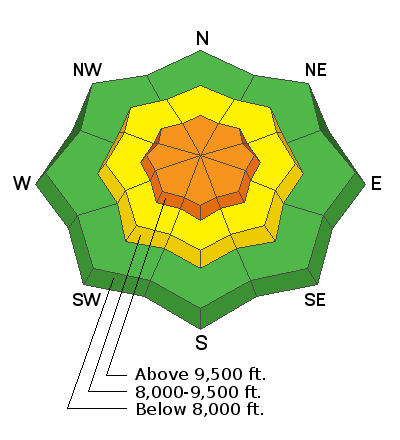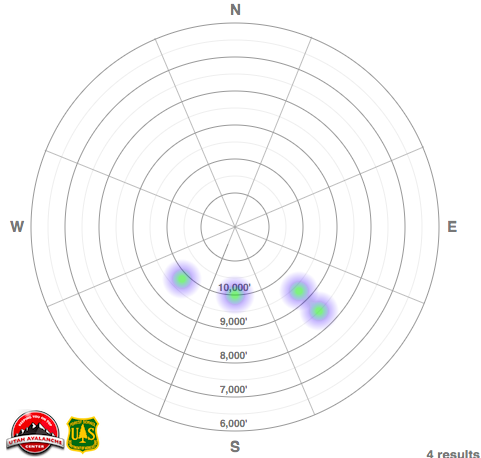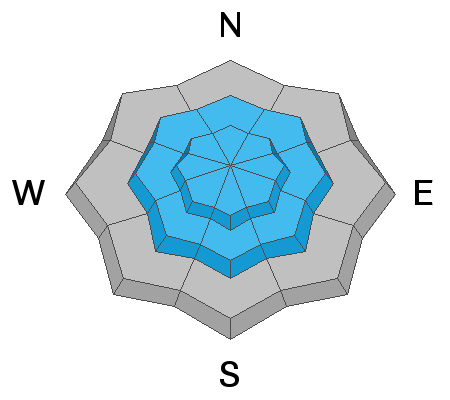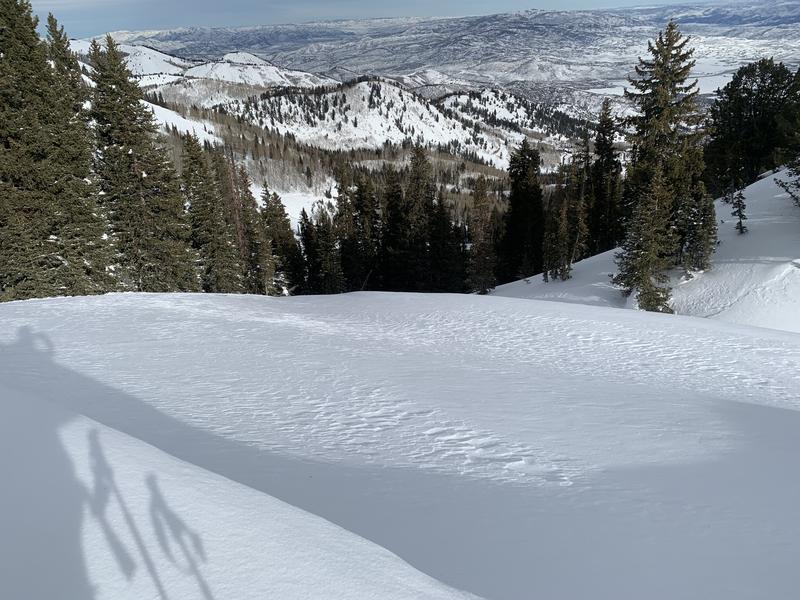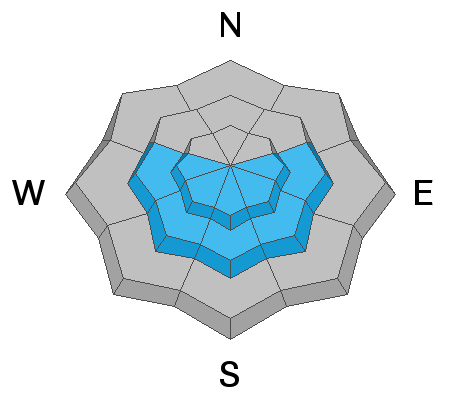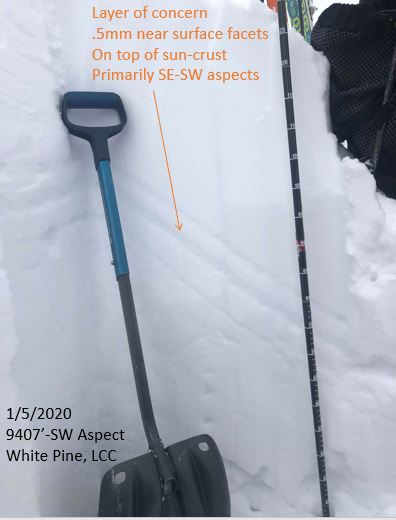Currently, mountain temperatures range through the low to mid teens F, but moderate to strong westerly winds are making things feel much colder. Along upper elevation ridges, winds are averaging in the teens and 20's mph, with gusts in the 30's and 40's mph. At 11,000' averages are in the 40's and 50's, with gusts in the 60's mph.
Snowfall began mid-afternoon Sunday, but this storm ended up disappointing, with only 2-4" of snow reported by this morning. Fortunately, despite the low snowfall amounts, the fresh snow and winds smoothed out many snow surfaces providing fun riding and traveling conditions.
For today, you can expect clearing skies as the day progresses as high pressure moves into the region. Temperatures will reach the low to mid 20's F and winds will be out of the west/northwest. At mid-elevations winds will average in the teens with gusts in the 20's. Along upper elevation ridges winds will be much stronger, averaging in the 20's and 30's, with gusts in the 40's. Fortunately winds are forecasted to diminish as the day progresses.
One backcountry avalanche was reported on Sunday. This was on a southeast aspect at 9400' on Wilson Peak. The slide was 12" deep and 175' wide, with a partial burial. Fortunately, a good outcome as the party was able to self-rescue. (
Link to observation).
On Saturday, eight avalanches were reported from the backcountry, with two involving catching and carrying riders. Luckily no one was fully buried or injured in these slides. These avalanches were all roughly 1-2' deep and up to 100' wide. On Sunday Mark visited the site of Saturday's avalanche on Sunset Peak down into Dry Fork, and came across a second - unreported - avalanche in the same area. This avalanche also likely occurred on Saturday (
observation).
The heat map below illustrates the aspects and elevations of avalanche activity since Jan 1 in the Salt Lake mountains. What is interesting about these slides is that they are occurring on southerly aspects - the aspects we generally consider to be safer. More on this issue under the discussion of Persistent Weak Layer.
Make sure to check out all observations posted
HERE. 
